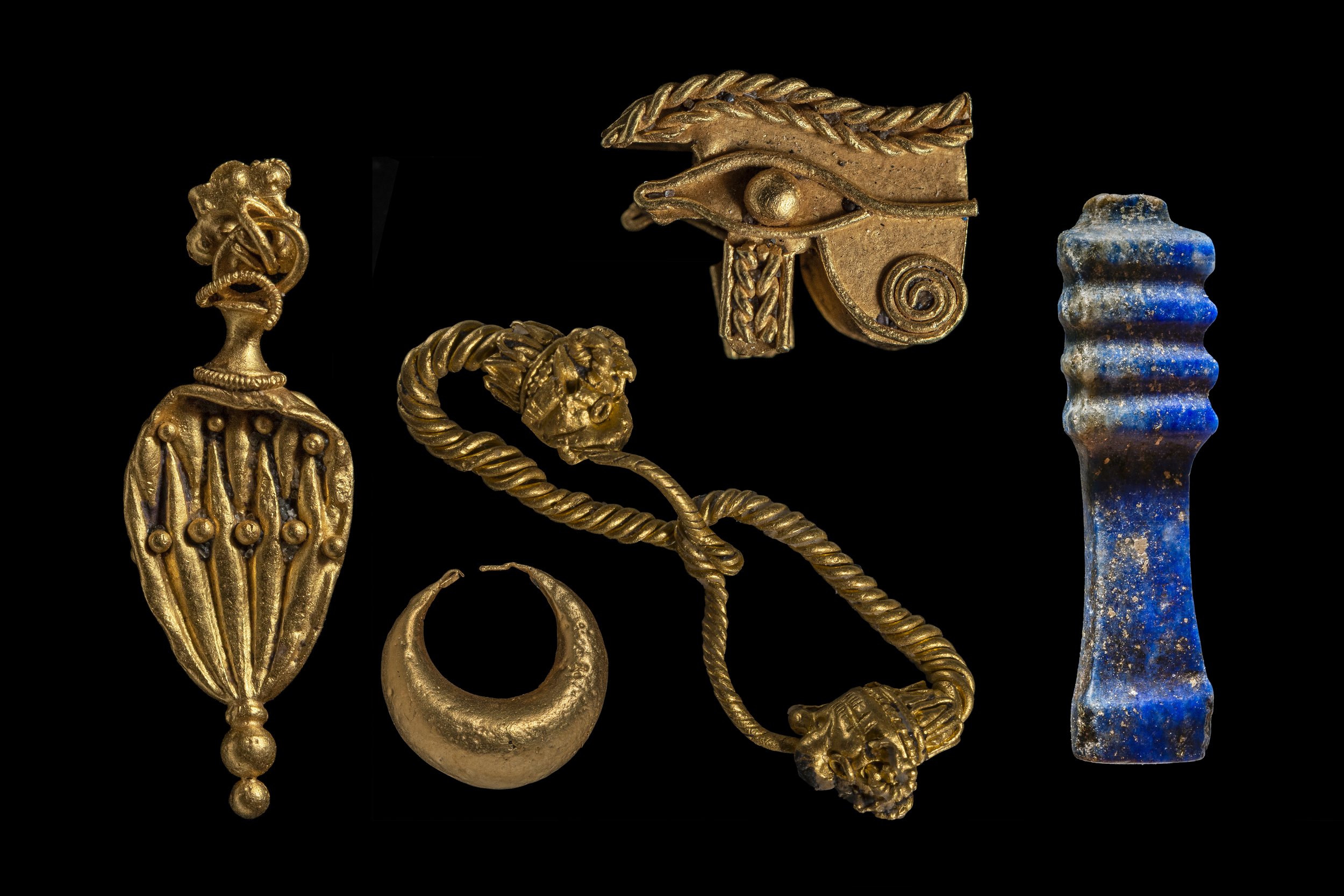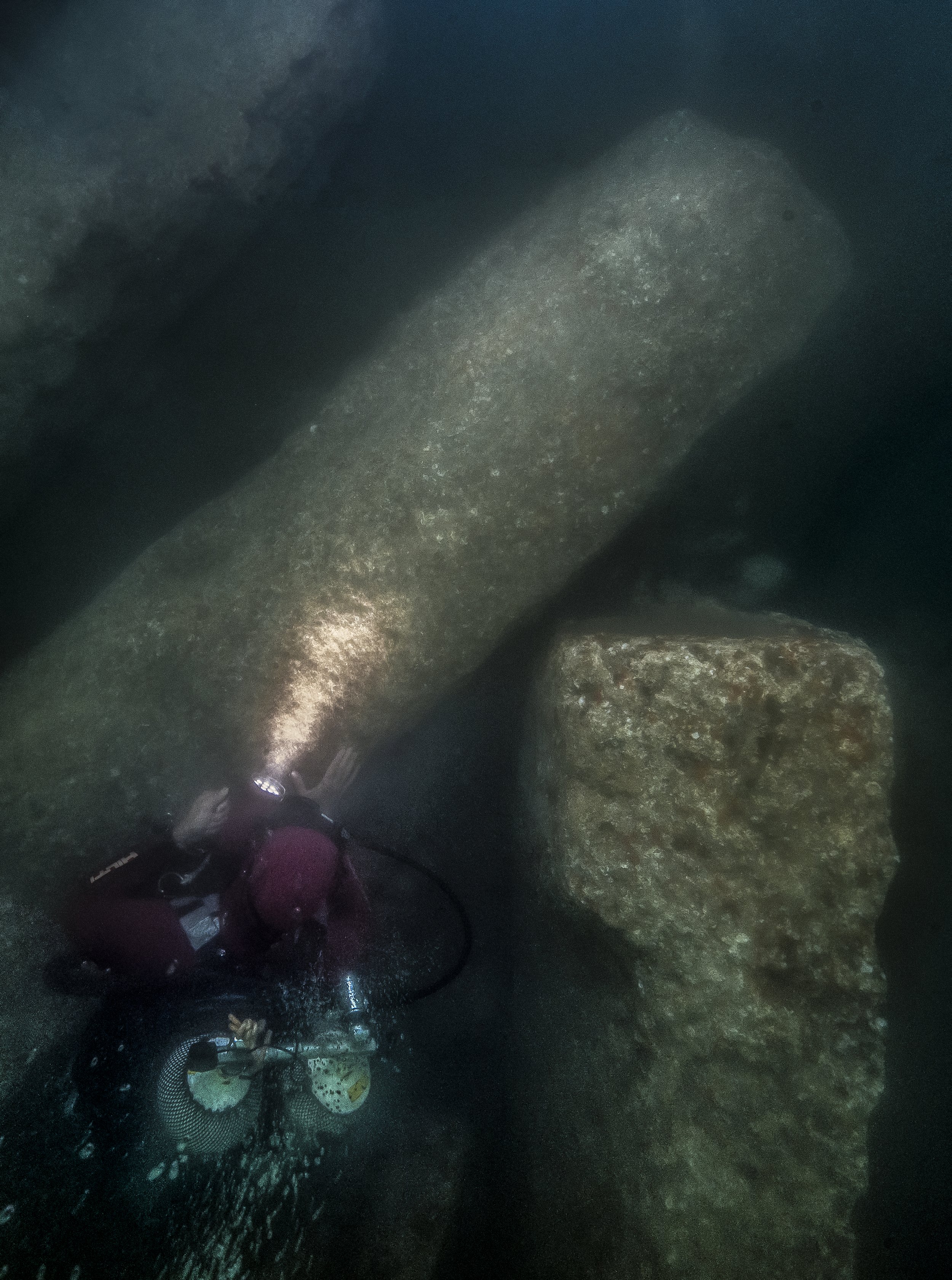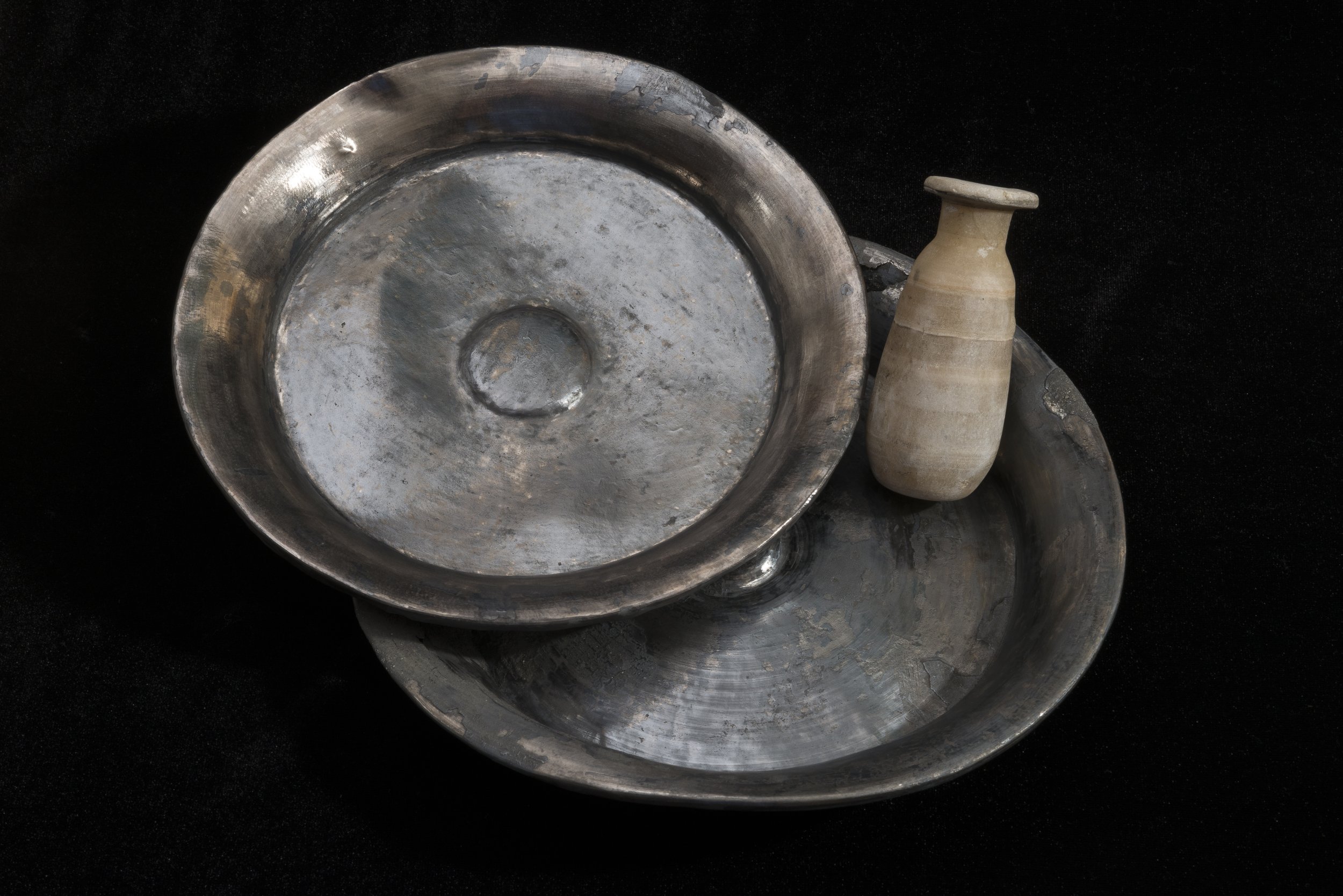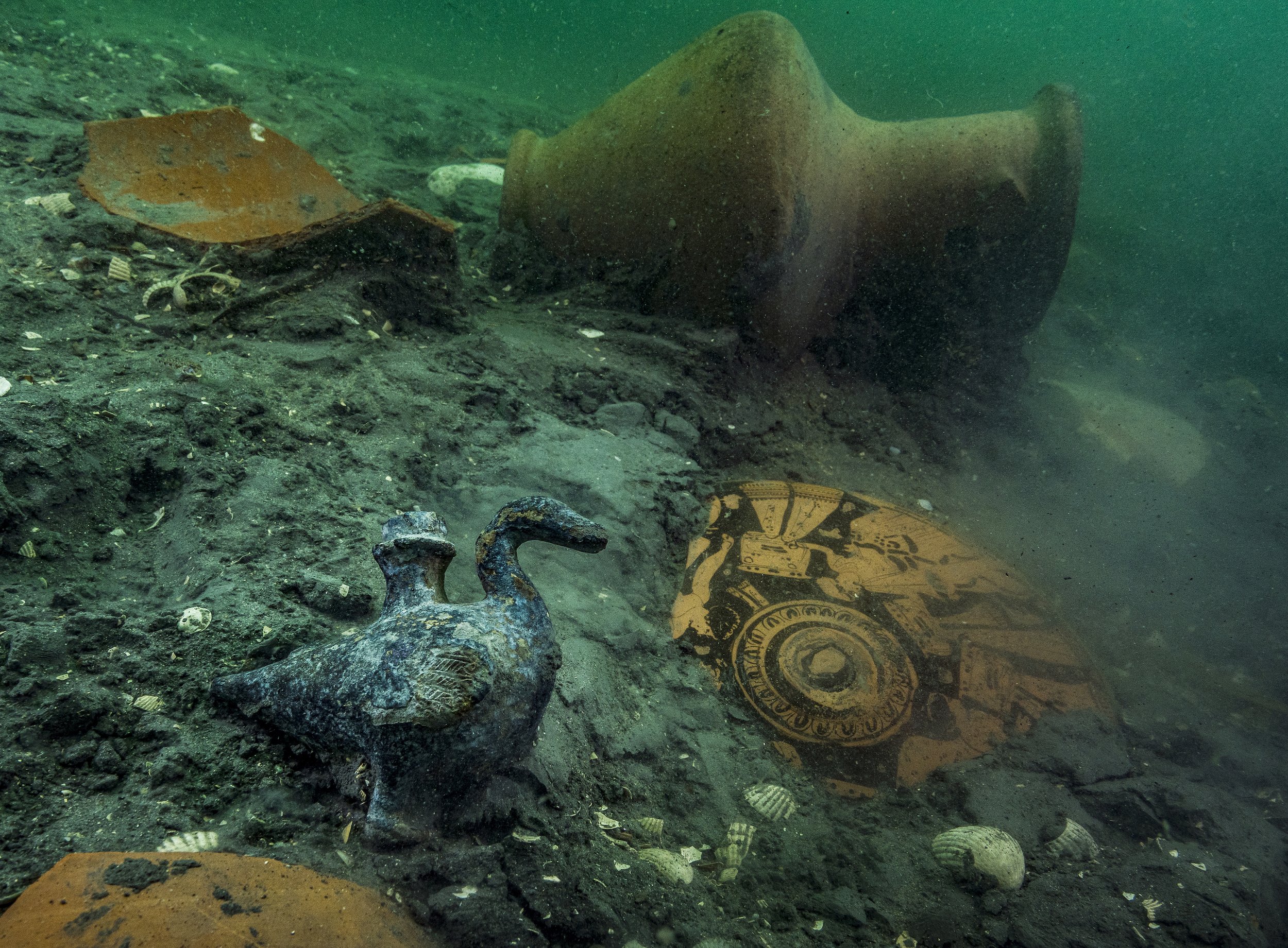Sunken Secrets: Franck Goddio’s Team Discovers New Artifacts at Thonis-Heracleion
Franck Goddio’s underwater archeology team made further discoveries at the sunken city of Thonis-Heracleion in the Bay of Abukir. In collaboration with the Department of Underwater Archaeology of Egypt’s Ministry of Tourism and Antiquities, the team discovered new artifacts around the city’s main temple, which was dedicated to Amun, the supreme Egyptian god.
The sunken city: Thonis-Heracleion
The sunken city of Thonis-Heracleion knew glorious times. It served as Egypt’s largest port and was crisscrossed with canals until Alexander the Great founded Alexandria, just seven kilometers away from the Bay of Aboukir. Several earthquakes,followed by tidal waves, triggered liquefaction, causing large areas of the Nile Delta to sink into the sea, and with them the city of Thonis-Heracleion. It was buried for millennia and only rediscovered by the European Institute for Underwater Archaeology (IEASM) in 2000. The city was of religious significance, housing the Temple of Amun, where rituals related to the continuation of the dynasty took place. Franck Goddio's team has discovered fascinating artifacts in this very temple during this year's excavations.
Diving into history
During this year’s mission, the team investigated the southern canal of the city. Huge blocks of stone were found belonging to the temple, which collapsed during a cataclysmic event in the mid-second century BC. The temple was the site of rituals where pharaohs were anointed universal kings by Amun, the supreme god of Egypt. A trove of precious artifacts, belonging to the temple’s treasury, was unearthed, such as silver ritual instruments, gold jewelry and fragile alabaster containers for perfumes and ointments. These findings offer a glimpse into the wealth of this sacred place and how devout the city’s former inhabitants were. Further exploration and the use of new technologies have led to the discovery of underground structures, several meters below the area of the temple, supported by very well-preserved wooden posts and beams.




Furthermore, a Greek sanctuary devoted to Aphrodite was discovered to the east of Amun temple and housed imported bronze and ceramic objects. This suggests that Greeks, who were allowed to settle and trade in the city during the reign of the Saïte dynasty (664 - 525 BC), had sanctuaries to their own gods. The presence of Greek mercenaries is also evident through the discovery of Greek weapons. These mercenaries are believed to have been defending access to the kingdom at the Canopic branch of the Nile, the river’s most navigable branch in antiquity.
Franck Goddio’s research and the shared drive to make the results available to both the scientific community and the broader public is made possible by the long-lasting support of the Hilti Foundation.
"It is extremely moving to discover such delicate objects, which survived intact despite the violence and magnitude of the cataclysm" - says Franck Goddio, President of IEASM and director of excavations.
European Institute for Underwater Archaeology (IEASM)
The IEASM was founded in 1987 as a French non-profit organization by its president Franck Goddio. The institute aims to locate, research, excavate and restore submerged sites. IEASM collaborates with scientists and experts from different scientific disciplines in its research missions and in the study and publication of the results. In addition, IEASM organizes exhibitions to give the general public access to the discoveries.
Maritime archaeology and the Hilti Foundation
Since 1996, the Hilti Foundation has been supporting underwater excavations in and near Alexandria under the direction of Franck Goddio and the IEASM in cooperation with the Egyptian Ministry of Tourism and Antiquities.
The Hilti family’s early engagement in supporting Franck Goddio’s work was the starting point for the Hilti Foundation. This long-term commitment has enabled Goddio to revolutionize maritime archaeology with innovative research and documentation techniques. As a result, he has succeeded in discovering fascinating sites and sunken cities that had been considered lost for centuries. The city of Thonis-Heracleion was discovered in 2000 by the IEASM, and underwater excavations at the site continue today. Franck Goddio estimates that only about 5% of the ancient city has been rediscovered and aims to unveil more with each annual mission he and his team carry out.
“Long-term and sustained funding for this extraordinary underwater archaeology project has not only made it possible to bring a city that had disappeared from the historical record for centuries back into the public eye, but also to rewrite parts of its history through the excavation results.”
